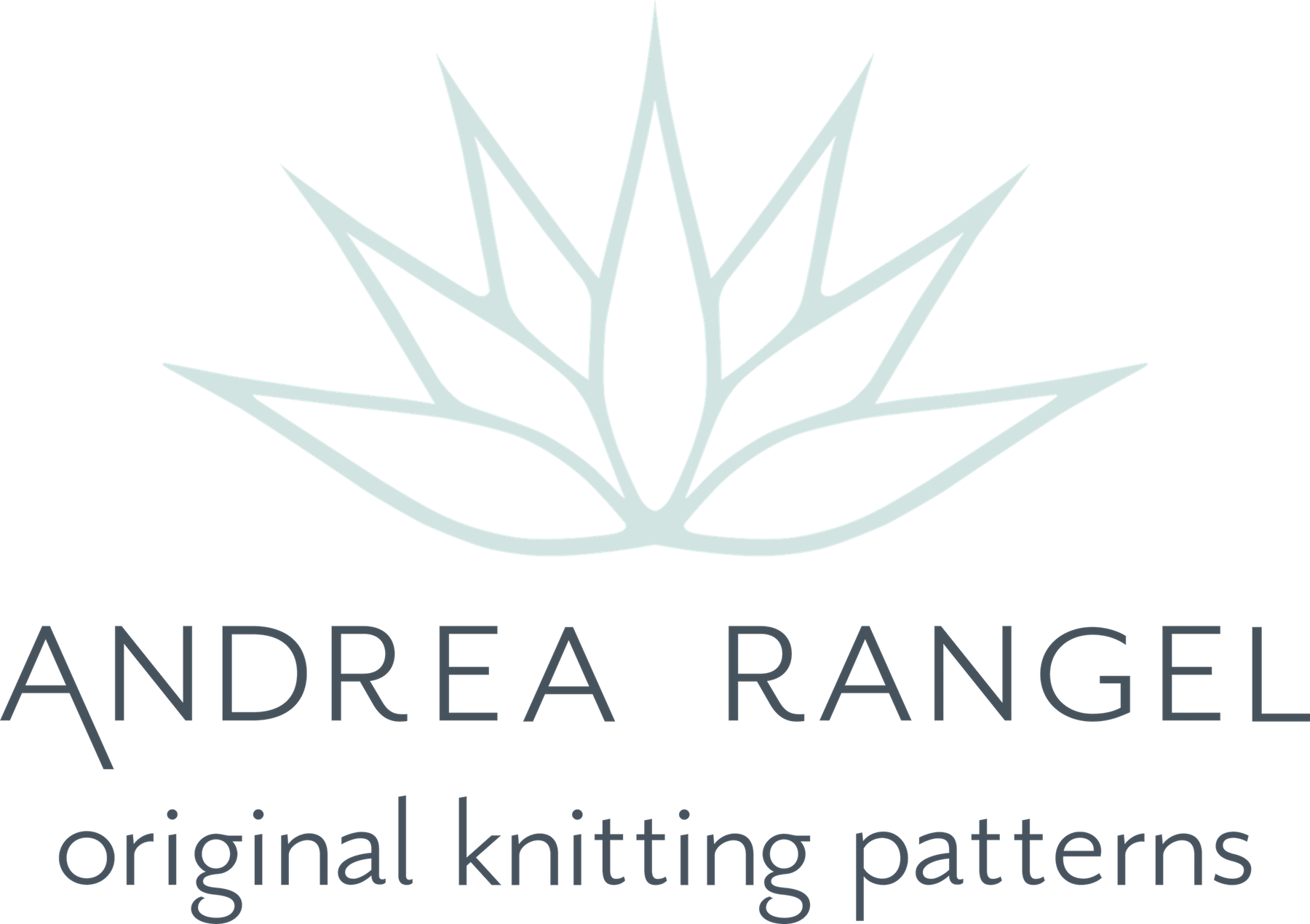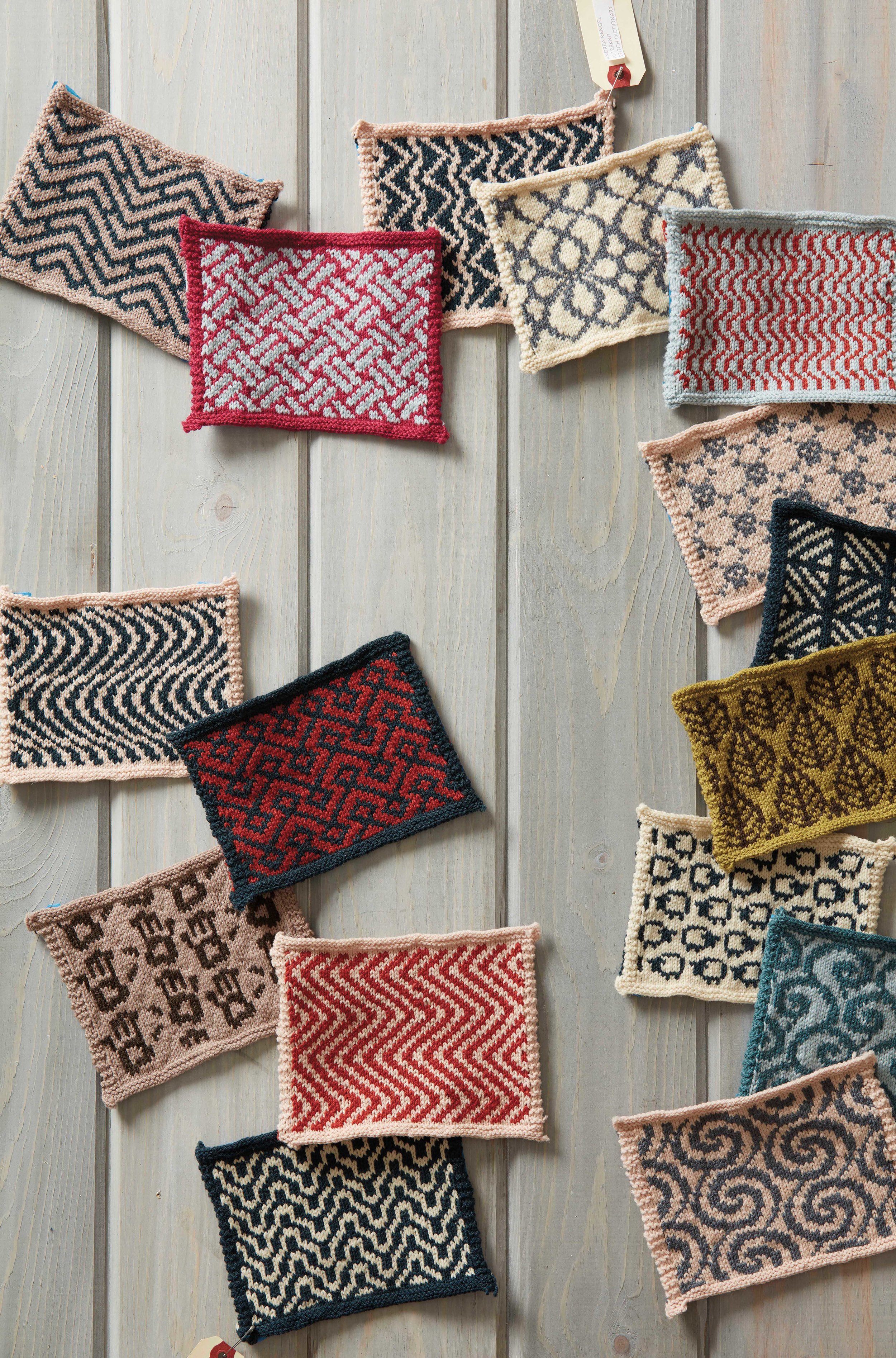7 Tips to Improve Your Colorwork
I’ve been designing knitting patterns for years and I’ve found that I can’t be tied down to one technique or project type in my design life. But I’ll admit that I really love working with stranded colorwork. In fact, I wrote a whole book about it. Alterknit Stitch Dictionary includes 200 original colorwork motifs and five new projects. My earlier book, Rugged Knits includes a bunch of patterns with colorwork too: Gleaming Horizon, Boreal Toque, Woolen Explorer, Passing Glacier, and Hazy Cloud.
I know some knitters find it intimidating to work with two colors. Maybe you’ve tried it and it didn’t turn out, or it just seems like too much to take on. But I encourage you to embrace the challenge and give it a try! Here are seven quick tips that will immediately improve the look of your color work.
1. Choose colors with high contrast. Make sure one of your colors is relatively light/bright and one is relatively dark so that the pattern will show up. Quick trick: take a black and white snapshot of your yarns together to see how well they contrast. (Your phone camera probably has a black and white filter option.)
2. Use a needle 1-2 sizes bigger for colorwork than you use for Stockinette stitch. A lot of knitters work more tightly in stranded colorwork than in Stockinette. I have to go up at least two needle sizes in order to maintain my gauge when switching from Stockinette to colorwork.
3. Spread out your stitches. Regularly pause to spread out the stitches on your right needle as you work (the ones you just finished knitting). This can help keep your strands the right length to smoothly fall on the wrong side of the work so that the right side of the fabric doesn’t look bunchy.
4. Hold the pattern color in your left hand and the background color in your right. Figure out which color is your background color and which one makes the pattern. Sometimes it’s obvious like in the Boreal Toque shown below (the gray is the background and the blue creates the pattern in the hat on the left, and the gold creates the pattern and the brown the background color in the hat on the right), but sometimes it’s arbitrary. Think about which one you want to pop more and call that one the pattern color. Then consistently hold the pattern color in your left hand (and use the picking/European method to work stitches in the pattern color) and hold the background color in your right hand (and use the throwing/British method to work stitches in the background color). If you prefer to hold both strands in the same hand, just be sure the pattern color is consistently held below the background color. Doing this will make your pattern pop out from the background and make your colorwork look more crisp and clear. This is referred to as color dominance and a quick explanation is that when stranding 2 colors, one of them will physically fall below the other one as you work. The color below ends up with more yarn than the one that’s stranded above, making the stitches in that color larger and causing them to visually pop more than the stitches made with the color that’s stranded above. You always want your pattern color to be held dominant so that the pattern stands out from the background.
5. Keep each ball of yarn on its own side. I always set my dominant/pattern color yarn down on my left side and the non-dominant/background color one on my right. Yarn bowls and project bags can be handy for this - just use two instead of one! (I love wearing frocks with giant pockets and keeping one color in each pocket.) And don’t let yarns get tangled at all. If they get wrapped around each other, pause to unwrap them immediately to avoid frustration later.
6. Manually manipulate unruly stitches! Inspect your fabric for particularly loose or tight stitches. Sometimes the first stitch after a color change will be a little funky, but you can use a pointy knitting needle to tug on the legs of those funky stitches, drawing more yarn from neighboring stitches into tight stitches and giving some slack from loose stitches to the stitches nearby. Because knitted stitches are just one continuous strand of yarn, you can redistribute that yarn from stiches that are too loose into stitches that are too tight. You can also tug on both legs of a tight stitch to get it to show better. This isn’t cheating!
7. Block your work before you judge it. Wet blocking makes a huge difference in the evenness of color work fabric.
I hope you take the plunge and give stranded colorwork a try. If you still need convincing or a little more help, here are a couple videos showing how I catch floats. You can do this every 3-5 stitches or, if you have a whole lot of really long floats between color changes, you can catch the floats every other stitch to create a consistent fabric as is shown in the videos (I did this for my Knitter’s Dude sweater shown above.)






